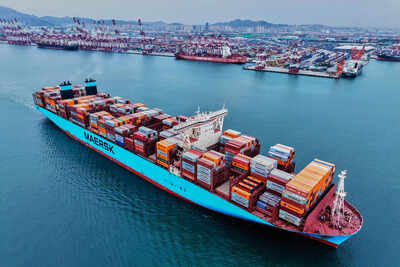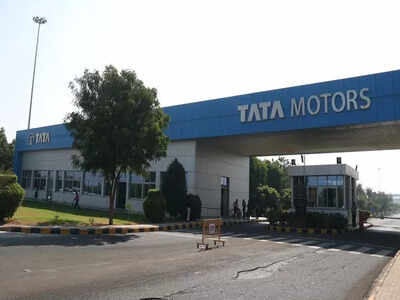
[ad_1]
Marking a big achievement over the last decade, extreme poverty in India has dropped substantially from 27.1% in 2011-12 to 5.3% in 2022-23, according to the latest World Bank data. The remarkable progress under the Narendra Modi government has come despite the World Bank raising its poverty threshold to $3 per person per day from $2.15 per person per day earlier.Incidentally, India’s huge reduction in extreme poverty comes at a time when globally there has been an increase in the number of people below the poverty line. According to a government fact sheet, India has emerged a statistical outlier in the positive direction.The latest data is being seen as a boost in the government’s economic growth narrative, and also comes at a time when the Indian economy is set to become the fourth largest globally by the end of this year.Experts have commended the reforms and inclusive growth measures undertaken in the last decade for the progress made in reducing poverty. “India is not only well on its way to becoming the fourth largest economy in the world at the end of 2025-26 as per IMF data, but has also done exceptionally well in nearly eliminating extreme poverty and tangibly reducing income inequality,” says DK Srivastava, Chief Policy Advisor at EY India.World Bank Poverty Line Data: Top Facts
- The number of people living in extreme poverty in India has dipped to 75.24 million in FY 2022-23 from 344.47 million in FY 2011-12.
- Almost 270 million people have been lifted above the poverty line in a span of just 10 years
- If one were to use the poverty line definition for low middle income countries ($4.20 per person per day), then India’s poverty rate has dropped to 23.9% from 57.7%.
EY India’s Chief Policy Advisor points out that India has nearly eliminated extreme poverty. “According to the World Poverty Atlas, a headcount ratio of poor below 3% amounts to elimination of extreme poverty. These estimates are based on the 2022-23 household consumption expenditure survey using a recall method of Modified Mixed Reference Period. In fact, consumption expenditure undertaken by households understates the actual consumption of households since it does not capture subsidized provisions through various government welfare schemes like Ayushman Bharat and Sarva Shiksha Abhiyan,” he tells TOI.Also Read | Economy in dire straits, India’s Indus Waters Treaty blow: Can Pakistan avoid the ‘begging bowl’?“The profile of income inequality, as measured by the Gini coefficient, also shows clear improvement. Between 2011-12 and 2022-23, the Gini coefficient has fallen from 28.78 to 25.51. These are highly desirable characteristics of India’s development path,” adds DK Srivastava.How has India done it?India’s GDP has more than doubled in the last decade, and experts believe that this has trickled down to the poorest, helping raise them above the extreme poverty threshold. A multi-pronged approach by the government seems to have worked to lower extreme poverty. Job creation and capital expenditure push, along with direct benefit transfers have worked, say experts.Ranen Banerjee, Partner, Government Sector Leader at PwC India explains, “There are a multitude of factors that have made it possible with the general economic growth and the trickle down effect. Higher construction activity owing to the higher tax revenue efficiency and consequent higher capex by the government from progressive digitalisation and formalisation of the economy has created several construction jobs.”“The cash transfers under various schemes of the central and state governments directly into bank accounts of the beneficiaries enabled by Aadhar and the MGNREGA scheme has also aided this improvement. The growing middle class and ensuing consumption from the services sector growth has been an enabler,” he tells TOI.“Another factor is the investments in roads, improving mobility and improved rural urban connectivity through the PMGSY. This has made the rural population more mobile to peri-urban areas as well as taking farm produce with relative ease to Mandis and urban markets. The cooperative movement and the setting up of Farmer Producer organisations (FPOs) and women self help groups for economic activities is also a contributor,” he elaborates.Also Read | Indian economy’s size more than half of US in PPP terms; stands at $15 trillion, says NITI Aayog Vice-Chairman“The push on financial inclusion catalysed by UPI has led to better small credit availability for nano businesses and individual trades. The proliferation of gig economy workers and e-commerce linking enterprises to rural source artisans is another supporting element of this achievement,” he adds.Madan Sabnavis, Chief Economist, Bank of Baroda says, “Economic growth has been impressive if the Covid years are excluded. This has meant that growth does help to alleviate poverty.”Sabnavis tells TOI that job creation, including through programmes like NREGA, MUDRA, special schemes for vendors has helped. He also attributes direct benefit transfers and free food programmes, which automatically lowers the number of poor as basic food is being provided by the government. “Several states have followed the policy of giving money to women in the lower income groups like Maharashtra, MP, Tamil Nadu etc. This directly pulls people out of the poverty trap,” he adds.What’s the road ahead?India continues to be the world’s fastest growing major economy and is expected to overtake Japan this year to become the 4th largest economy. In the coming years, it will surpass Germany to become the third largest. Yet, for a country which ranks among the top 5 in terms of nominal GDP, the per capita income continues to be low. “Going ahead, with the economy continuing to grow at a high rate, we can expect more jobs to be created which will help in sustainable living standards. The governments may have to continue to provide support at the lower income levels until such time that families are able to procure jobs that will make them independent of such support,” concluded Madan Sabnavis.While progress has been made on the path to increase the standard of living of its population, India still has a long way to go. As it looks to alleviate poverty, it will be crucial to ensure that benefits of higher GDP reach the poorest.Also Read | Explained in charts: India to become 4th largest world economy soon. What’s the road ahead to No.3 spot?
[ad_2]
Source link











Be the first to leave a comment